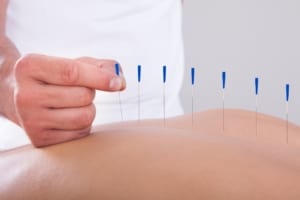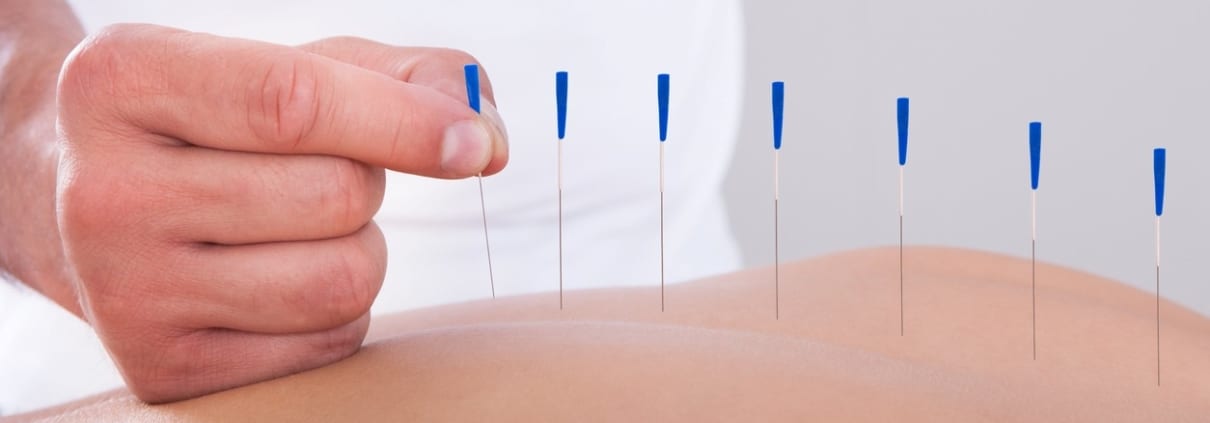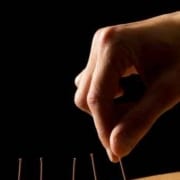Getting under the skin of Western Acupuncture
Western Acupuncture in London

As many of my patients already know, I frequently combine osteopathy with one or more other therapies, such as Western acupuncture, when seeking the best treatment outcome for a patient.
Acupuncture has been used in the Far East for over 2000 years, reaching the West during the 17th century. The medical profession now increasingly recognise and use it as an effective form of pain relief. One or more fine needles are inserted through the skin into specific points within the body and left in position for a short while. These can be manipulated by hand or via low-voltage electrical stimulation (known as electro acupuncture). Basically, acupuncture stimulates nerves within the skin and muscle. It releases endorphin and serotonin – the body’s own painkillers – into the pain pathways of the spinal cord and the brain. In this way it modifies how pain signals are received.
Eastern vs Western Acupuncture
In my practice we use Western acupuncture, also known as dry needling. This version of the therapy combines the use of the same acupuncture points and needles as Eastern (Chinese) acupuncture with a Western approach to evidence-based medicine and the latest scientific knowledge.
Traditional Chinese acupuncture seeks to balance opposites – yin and yang, hot and cold etc and facilitate the flow of the life force Qi – in the pursuit of general good health or to ward off illness. In contrast, Western acupuncture uses a ‘neuro-physiological’ approach to target specific issues.
How acupuncture can help you
In recent years, a growing body of research as reviewed by the Acupuncture Evidence Project* has shown that acupuncture can help by:
* Providing pain relief for tension headaches/migraine, TMJ, back, neck, shoulder, leg and knee pain and discomfort resulting from arthritis, rheumatism and operations
* Relieving trapped nerves, muscle strains, sports injuries and generally increasing the range of physical movement
* Reducing reliance on and side effects of medication
* Relieving nausea, including morning sickness in pregnancy
* Helping with infertility
* Dealing with sleep problems
* Promoting natural healing and well-being
Benefits of Western Acupuncture
The therapy offers several hugely important benefits, as it is:
* Largely (although not always) pain free, with a minimal risk of bruising or bleeding
* An effective painkiller, stimulating the release of the body’s own natural analgesics
* Safe, including during pregnancy – The British Medical Association has undertaken several studies regarding its safety
* Able to combine safely with osteopathy, and patients can usually benefit from both therapies during the same session
How I treat patients using Western Acupuncture
Once I have assessed a patient and I feel that acupuncture may benefit them, we discuss what it involves. Assuming they are happy we then agree a treatment plan. Initially, treatment might take place once a week to begin with, then at longer intervals as the patient feels better.
In the UK acupuncture is taught at post-graduate level to those with existing medical qualifications. I studied with The British Medical Acupuncture Society, qualifying in both Western acupuncture and related Electro-Acupuncture, offering both at my clinics. For more information on Western acupuncture or to book a consultation in one of my London clinics, please feel free to contact me.
*John McDonald and Stephen Janz, The Acupuncture Evidence Project, 2017





Leave a Reply
Want to join the discussion?Feel free to contribute!